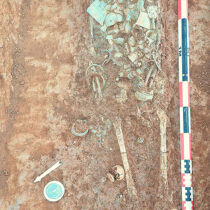Pliny the Elder gives a blow-by-blow description, not always correct, of the processing of papyrus from the homonymous plant of Egypt. He also refers to the various qualities of papyrus available on the market. Other sources give information on the selling prices of this writing material from the Classic to the Roman age. The ancient papyri that havecome down to us are mainly from Egypt but also, in a smaller percentage, from Palestine and Mesopotamia. Only a few papyri have been discovered outside these countries. The most important papyri found in Europe are the cylinders from Herculaneum, Italy, discovered in a rural villa along with a collection of fine sculptures during an excavation in 1952. Greek papyri have also been discovered in the Persian Kurdistan, in Ai-Khanoum, Afghanistan, in Doura- Europos, Mesopotamia, as well as in caves around the Dead Sea, Palestine. The Greek soil has supplied papyrology with few papyri. One, of the mid-4th century B.C., was found in Derveni, 10 km. north of Thessaloniki, in 1962; another, of the mid-5th century B.C., the oldest, so far, example of Greek writing on papyrus, was found in a tomb at Daphni, Attica, among other offerings (see Αρxαιολογiα 1, Nov. 1981, p. 85). The expedition of Napoleon the Great in Egypt stands as a landmark for the study of ancient texts and Egyptology. However, until the second half of the 19th century, the study of Greek papyri was considered a secondary discipline, subordinate to Egyptology. The great number and significance of papyri, discovered during the three last decades of the 19th century, thanks to the systematic excavations of European archaeologists gave every right to the famous Romanist Mommsen to state that if the 19th century is known as the age of inscriptions, the 20th would be known as the age of papyri. The numerous editions and studies of papyrus texts set the foundations for a new self-contained and self-sufficient science, that of papyrology.
Papyri and papyrology
30 Jul 2012
by Archaeology Newsroom
- A
- A
- A


